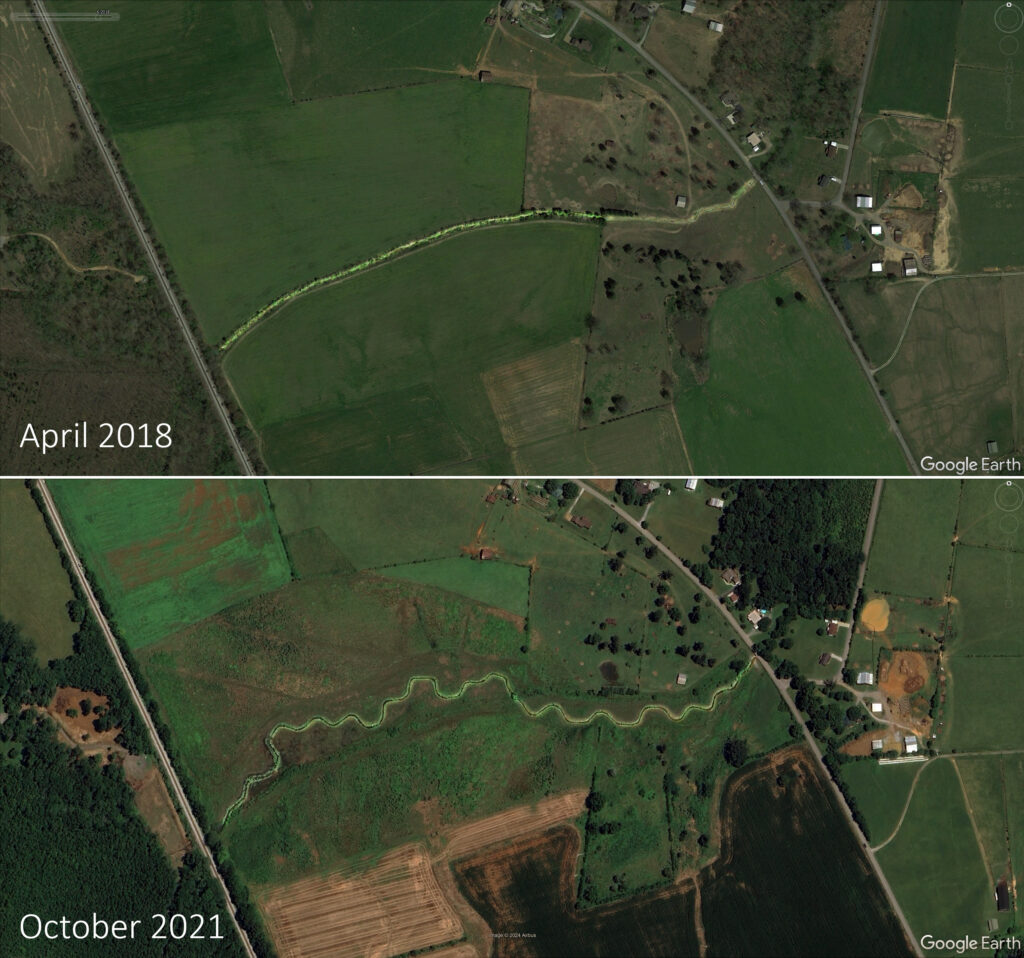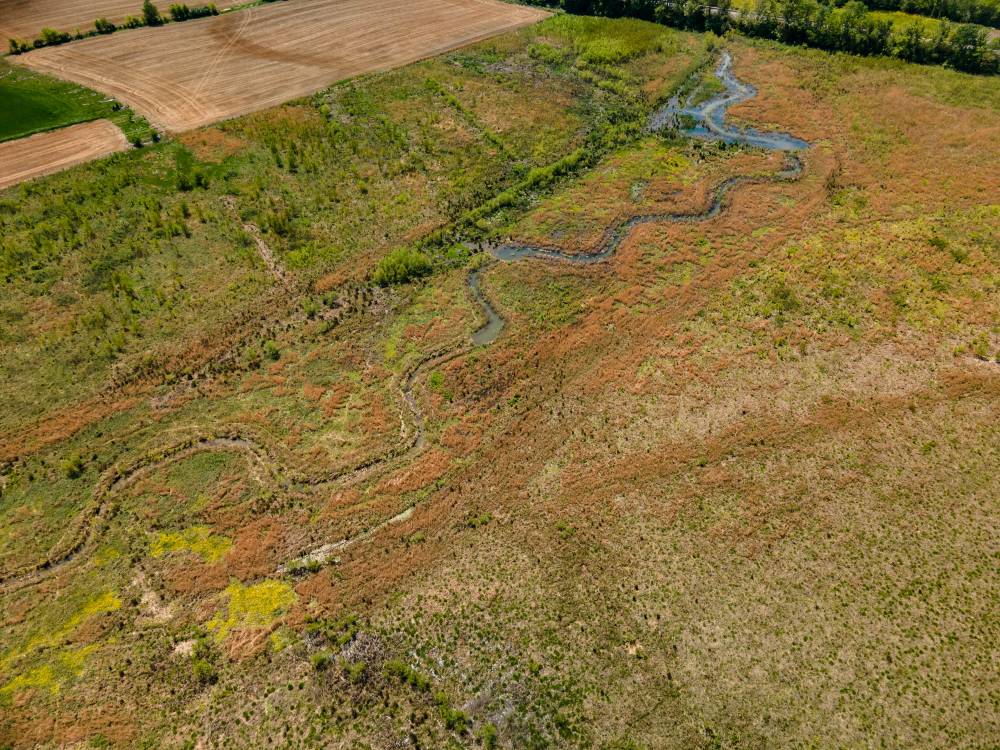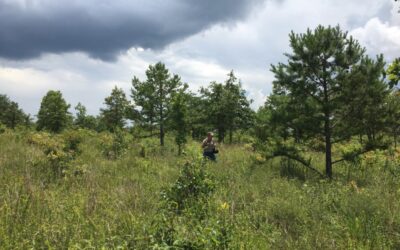Tennessee Wildlife Federation’s Habitat Conservation program works with landowners throughout the state to restore land to its native habitat. To date, the Federation has restored more than 5,000 acres of forest, grassland, and wetland habitats and 7 miles of streams and rivers across Tennessee.
In Sumner County, a collaborative restoration project has transformed 50 acres of less productive farmland into a healthy, functioning stream and wetland ecosystem which includes 4,400 feet of stream in the West Fork Drakes Creek watershed. This effort is part of the Federation’s ongoing work to restore and protect natural habitats across Tennessee.
Site History
The wetland, located in the southwest corner of the Barren River Watershed, in northern middle Tennessee, was drained in the 1960s for agriculture purposes. Stream banks were eroding, causing increased sediment and pollutants to enter the waterway, and the land alongside the stream had degraded to the point where it could no longer perform the essential ecological functions typically associated with wetlands.
While the site had not been recognized as a wetland for decades, remnants of wetland soils were still found within the property. The site is also adjacent to more than 30 acres of native wetland, which provided a reference for the hydrology of wetlands in the area.
Restoration Process
Restoration began in Fall 2019 and focused on replacing the channelized, unstable stream with a dynamic, meandering stream and re-establishing a healthy wetland ecosystem in the floodplain.
The drains installed in the soil decades ago were removed, increasing the flood storage capacity of the floodplain and the ability of the wetlands to store nutrients from neighboring agricultural fields.
More than 10,000 native tree and shrub saplings were planted in the restored wetland and stream corridor. The saplings were all regionally-sourced and known to thrive within the Barren River Watershed.

Post-Restoration Impact
After the restoration was completed in March 2020, a permanent conservation easement was placed on the site to protect the wetland and stream from future construction or development. Now entering the fourth year of monitoring, the site is flourishing and healthy. The number of trees growing per acre has more than doubled since the first year after planting, and what was once a low productivity field is now a pooling wetland filled with native wildlife including fish, songbirds, beavers, and much more.
Learn more about Tennessee Wildlife Federation’s Habitat Conservation and Restoration program at tnwf.org/habitat-restoration.




